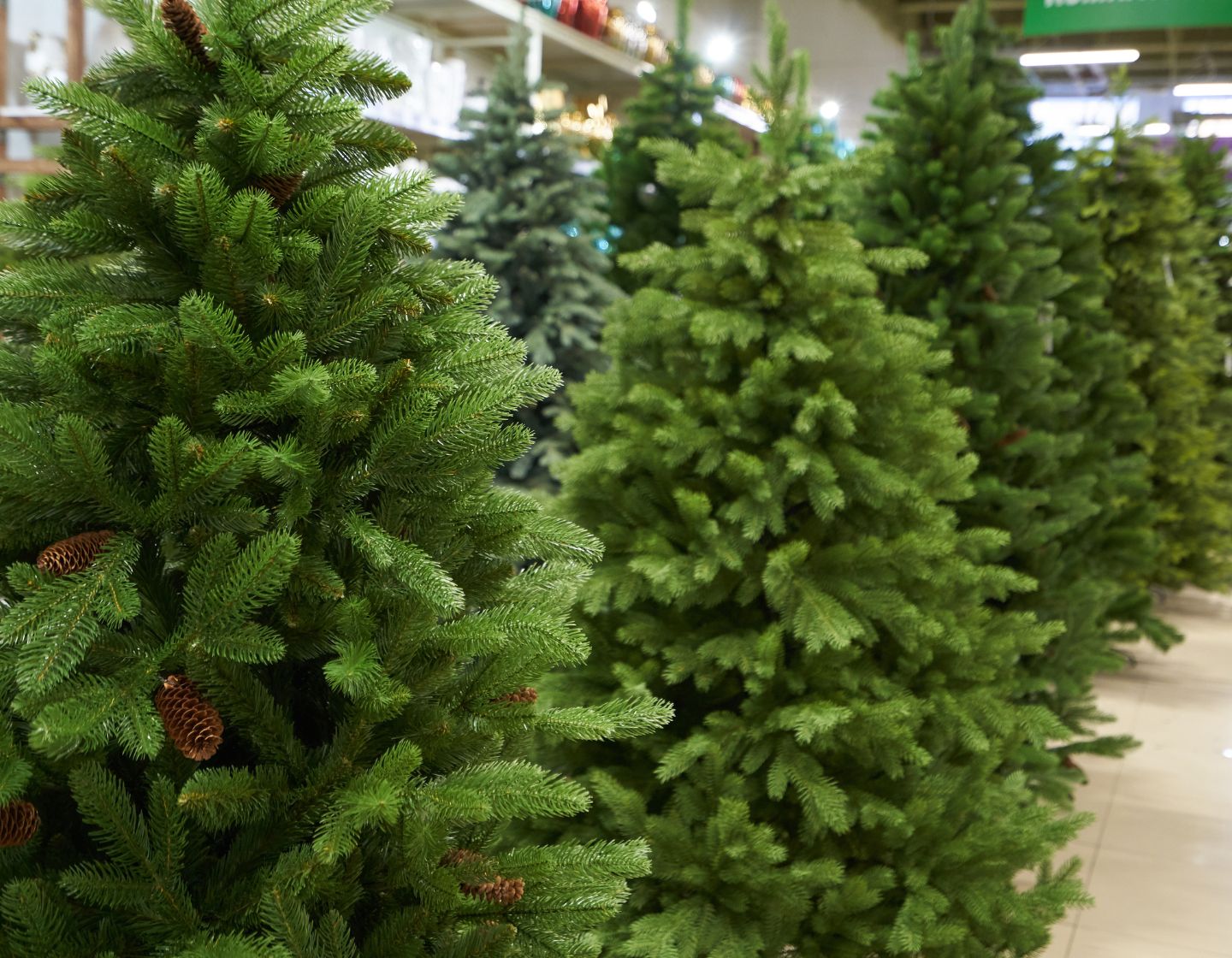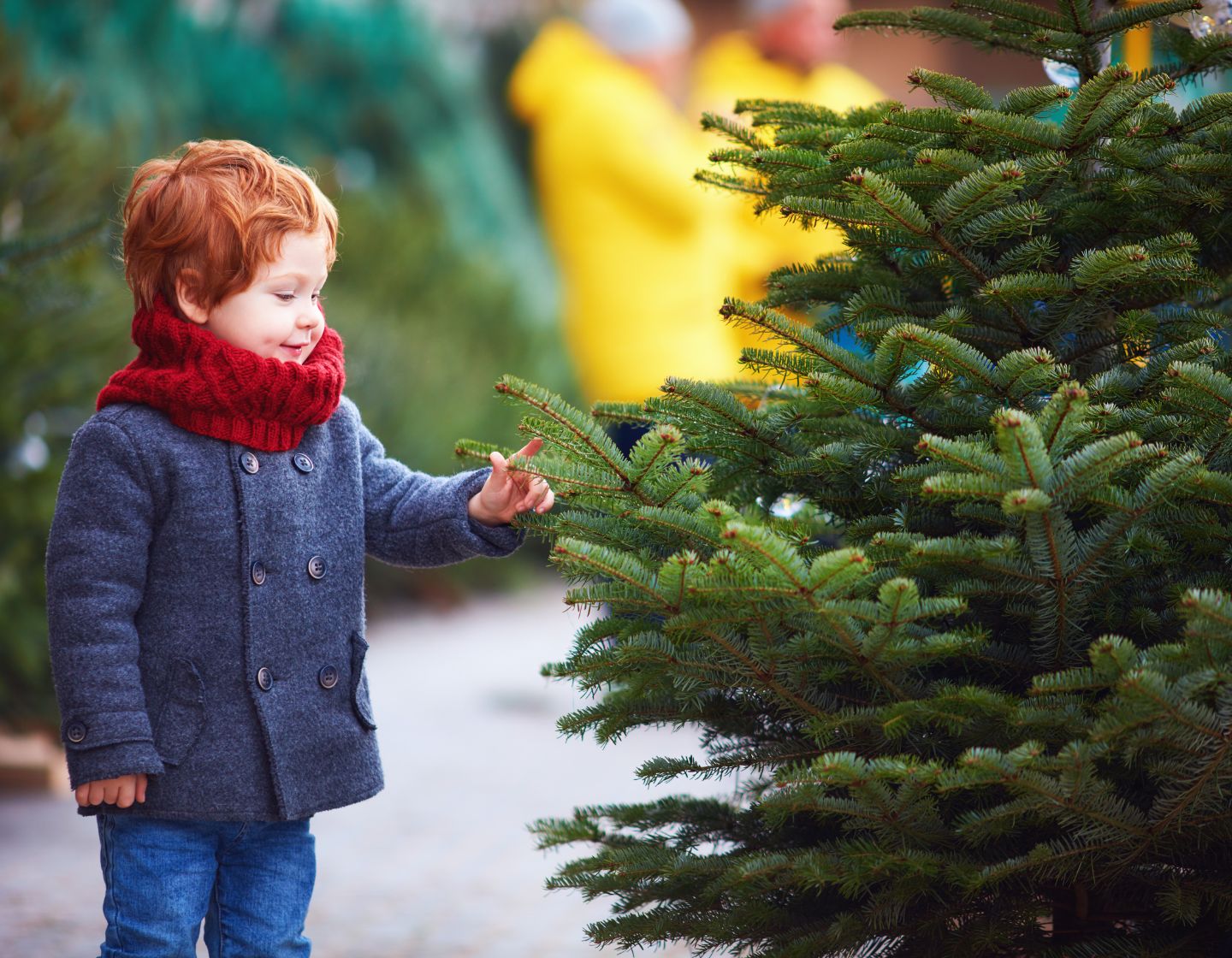What’s the most eco-friendly Christmas tree?
If you, like many others in the last few years, have been attempting to live a more sustainable lifestyle this year, you may be wondering how you can be more sustainable around the holidays – including choosing your Christmas tree.
You may also be thinking that perhaps an artificial tree is the best option, because it is reusable year on year? You might be surprised to learn that actually, it isn’t.
Artificial trees aren’t the sustainable option
For one big reason really – the fact that they are manufactured in factories, made from plastic and shipped to stores and homes all over the world.
The manufacture of each plastic tree is responsible for around two thirds of its carbon footprint, according to the Carbon Trust – the rest is from industrial emissions produced when the tree is made, and from shipping emissions (as the majority come from China). They’re also made using mixed materials, not just plastic – copper, steel and plastic that are fused together in the production process.
Did you know that a 6.5ft artificial Christmas tree has a carbon footprint equivalent to 40kg of greenhouse gas emissions?
That’s more than double that of a real tree that ends up in landfill, and more than 10 times more than if a real tree was burnt. This surprised even me, I have to say – having grown up with artificial trees each Christmas.
Now you may argue that once that tree has been manufactured, it will last and be reused each year – and being fair, that is about half right. This point is up for much debate. The Guardian has reported that you’d need to reuse your tree for between 10 and 20 years to see the environmental benefit – however the NY Times claims that it’s actually only 5 years or more when compared with real trees.
But many environmentalists and forestry experts disagree and claim that artificial trees have a more adverse impact, regardless. They argue that plastic is not a sustainable resource, and artificial trees are much harder to recycle than real trees due to the mixed materials used (steel and copper). They also point out the negative impact on wildlife and increased landfill.

Real trees can be more sustainable, if done right
On the flip side, with 8 million real Christmas trees sold each year in the UK, it seems counter-intuitive so say real trees are more sustainable than an artificial (thus reusable) tree. And you wouldn’t technically be wrong to say cutting down a tree each year isn’t sustainable – let me explain.
Those same forestry experts argue that real trees are more beneficial to the economy as they preserve farmland and jobs.
Real trees are grown as a crop with the purpose of being cut down – they are grown on land that is unsuitable for farming of other crops. If you were to buy a 6ft real tree, it will have been growing for about 8-10 years. That’s 8-10 years of that tree absorbing carbon from the atmosphere and benefiting wildlife.
Mike Childs, head of research at Friends of the Earth says, “Locally grown real trees are the best option if you can get one.” Friends of the Earth advise to look for a locally grown real tree, or at the very least a UK-grown one with an FSC (Forest Stewardship Council) certification. This will help avoid unnecessary emissions from importing and transporting the tree.
Real Christmas trees can become climate positive – creating an environment beneficial to removing carbon from the atmosphere. According to Oliver Kenny of Yorkshire Christmas Trees, he plants more trees than he cuts down each year – he explained:
“At any one time in the UK there are about 100m trees growing with all the benefits that trees give to the environment. These trees would not be growing if it weren’t for the Christmas tree market,”
“Growing them in the UK reduces the carbon footprint of importation and you also get a fresher tree because it can be cut three weeks later.”
Additionally, disposal is much easier and greener than artificial trees, as you can home compost them and use them as fertiliser on your garden throughout the year. If you’ve not got a compost system, most UK local authorities now offer collection services for real trees – they’re collected, shredded, and used on gardens, parks, or even mulch for fertiliser. That is the greenest way to dispose of a real tree, if you have your heart set on a that 6.5ft tall, full, real Christmas tree.
But disposing of that real 6.5ft tree improperly – through landfill – could result in a carbon footprint of 16kg CO2, because as it decomposes it will produce methane gas, which is 25 times more potent than CO2.
When it comes to disposing of your artificial tree, there are still more negative impacts – even if you have kept it 10 years or more.

Potted real trees are even more sustainable
Not all reusable trees are artificial! Potted trees have been growing in popularity over the years, according to retailers. There are a few different kinds of potted trees:
- Pot-grown trees are grown from seed in pots that are plunged into the ground
- Potted or “pot-pressed” are trees whose root system has been pruned
Growers claim that pot-grown trees offer a number of benefits over a pot-pressed tree. The plant is more stable and has more consistent root temperatures due to specially designed holes in the pot that help it stay cooler. Pot-pressed trees however are often pruned brutally, which means they are less likely to survive the next year due to the shock to their system.
Pot-grown trees are a wonderful sustainable option for your Christmas tree. You get that wonderful real tree smell in your home and they can either be planted out in the garden when Christmas is over or re-potted and used again for the years to come.
Speaking from personal experience, they can be a truly heart-warming family tradition – it’s been an absolute pleasure to watch my grandmothers tree grow each year with my siblings and me. When it’s too tall to bring inside (which has taken about 20 years to get to!) she’ll plant it in her garden and start the tradition anew.
Imagine the joy of watching your tree grow year after year – or watching it grow with your children? I truly recommend it.

So, what’s the verdict?
The most sustainable option is by far a pot-grown or potted real tree – next up is a locally grown cut real tree that is properly recycled. When choosing any real tree, ensure it is either locally grown or FSC certified.
If you already have an artificial tree, don’t throw it away keep it and keep using it – if you prefer the sound of a real tree, you can always store your artificial one for future use. If you don’t have the storage space for it, try and sell it on platforms like Gumtree, eBay or Facebook Marketplace.
If artificial trees are your preference, don’t feel guilty or beat yourself up – there’s plenty you can do to offset your choice. If your artificial tree is looking shabby and needs replacing, or you have more room for a larger one, then definitely try shopping for a second hand one to keep the carbon footprint down.

